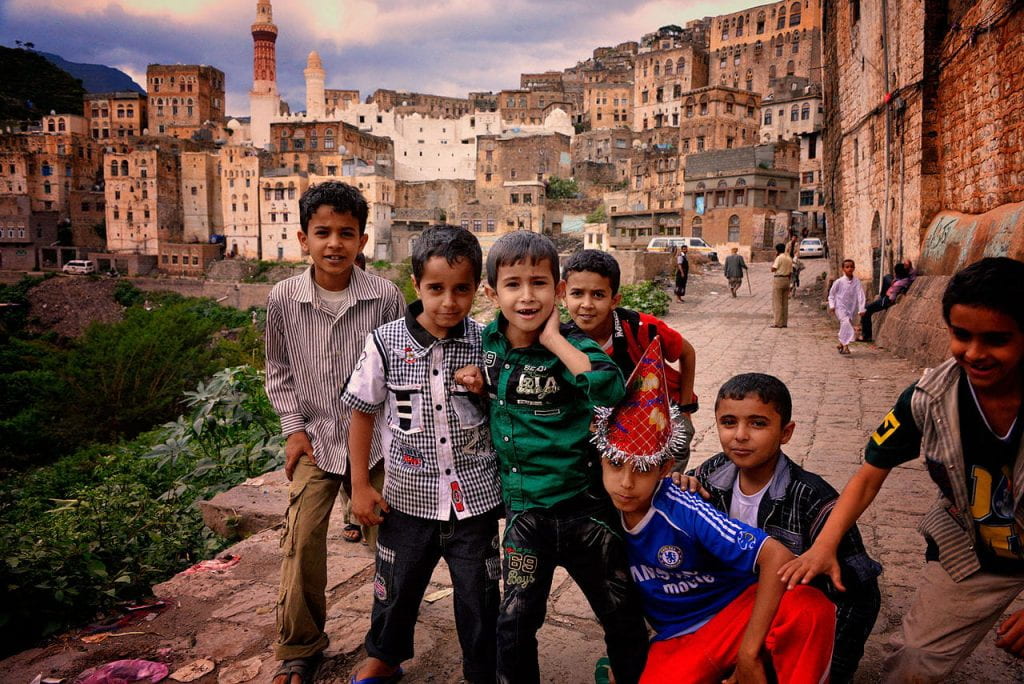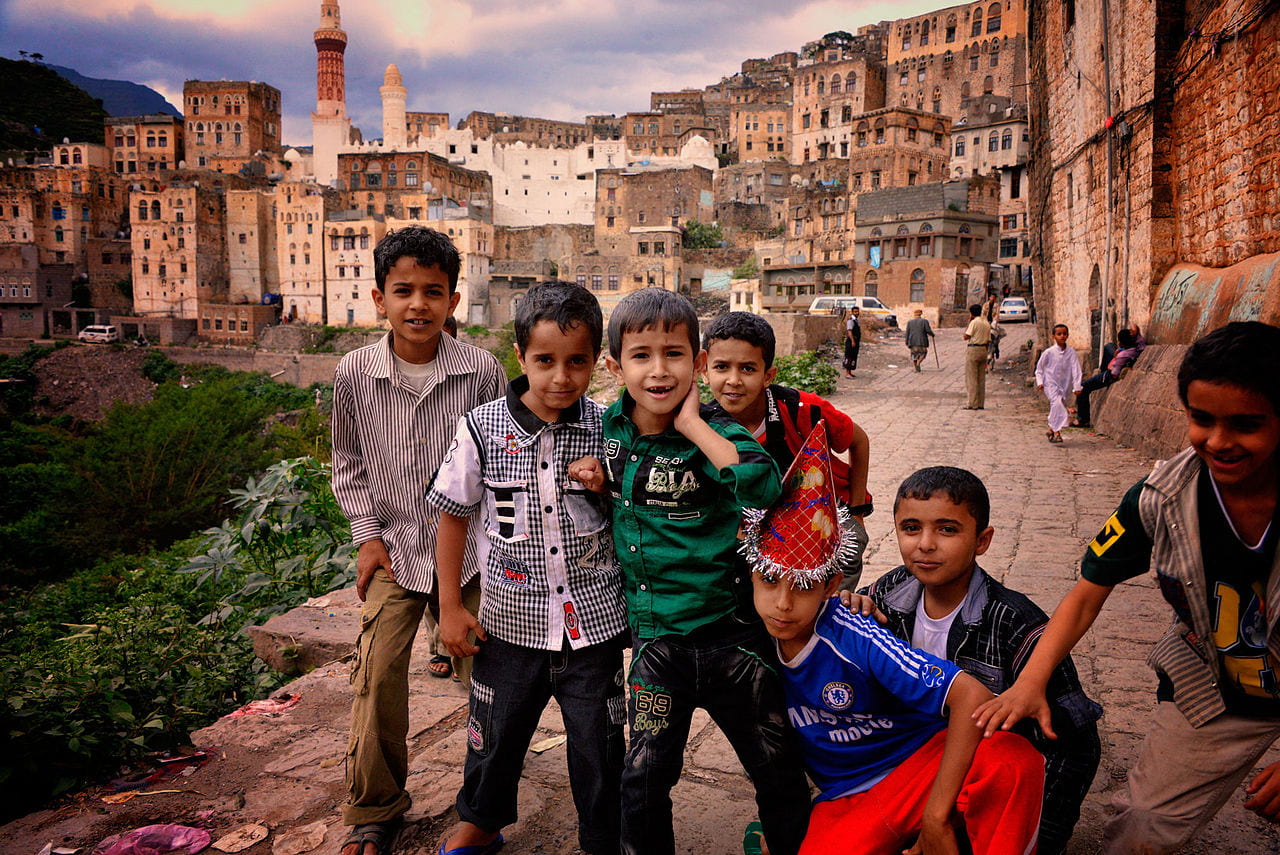
The rise of modern extremist groups has drawn new attention to child soldiers, triggering compassion and outrage. Besides the tactical advantage – where children are more capable of getting close to their targets – children are weaponized and featured in propaganda, even as suicide bombers or executioners, to attract media for the political advantage and attention, while others hang onto the group, maybe seeking refuge, while working as auxiliaries (cooks, messengers, porters, brides, stationed guards, etc.) in desperation. So malleable and vulnerable growing up in worlds hostile to childhood, child soldiers are collateral damage of warfare, used as tools, sacrifices, or targets.
To better protect children from this exploitation, International Humanitarian Law (IHL), Convention on the Rights of a Child, the Fourth Geneva Convention, and a statute of the International Criminal Court all set the International Stage prohibiting the recruitment and use of children in hostilities, banning voluntary enlistment, and considering these actions as war crimes. In 2002, the UN General Assembly’s Optional Protocol on the Involvement of Children in Armed Conflict (OPAC) entered into force as the world’s first international treaty focused on ending the military exploitation of children, protecting anyone under 18 from recruitment and conscription in conflict. Seventeen years since, 166 countries have ratified it (21 generated by the Zero under 18 Campaign of 2010). However, the UN Security Council Resolution 1612 responsible for monitoring and reporting compliance, realizes enforcement is difficult especially because most violations are made in the name of non-state actors (those who are wholly or partly independent from state government).
In the MENA (Middle East and North Africa) region, many sides of ongoing conflicts have been documented or accused of using child soldiers for these reasons. However, the Islamic State – as ISIS or ISIL – is of the most notorious for its exceptional number of children enlisted for military engagement and for the distinct role its “Cubs” play in the international narrative. ISIS has bred “Cubs of the Caliphate” as a unique form of resilience by combining intense physical training with ideological and psychological indoctrination to advance the organization’s current and transgenerational aims- meaning that enlisting children allows the Islamic State to outlast territorial defeat and ensure its survival through these new generations. Since these children are seen as the future of IS, education and propaganda are essential to indoctrination.
The recruitment process of child soldiers involves the selection of a recruit, gaining different accesses, developing emotional trust, and ideological development. In efforts to gain powerful or intimate access to a child and avoid detection or resistance, recruiters may charm or manipulate them into physical and psychological isolation especially away from their parents or community exploiting familial and psychological vulnerability (neglectful or abusive conditions, suppression as members of minorities or other discriminated groups, orphaned children, poverty, etc.) while offering aid, resources, or promises of hope or retribution they have been deprived of. In ISIS-held territories, recruiters can act with impunity, with public access through different media channels or local gatherings. Children may join voluntarily, following their peers, dedicated to revenge, and for income, resources, security, or basic needs these organizations provide to orphans or children living in poverty or war-like conditions. Some children may have encouraged or pressured by their parents and family members who support or trust in the organization’s mission, for the religious promise of martyrdom, or in search of other securities. While other children are sold to militias. For example, in 2009 outside of MENA, the leader of the Tehri-e-Taliban Pakistan was reported to be buying children from 7 to 16 to serve as suicide bombers for prices between 7,000 and 14,000 USD in a nation where the per capita income was 2,600 USD per year. Further, in some of the region, Taliban leaders would demand money from families in return for protection and if they could not pay this amount, the group demanded a child recruit for the movement.
Children growing up in ISIS or similarly occupied territories in a crisis-struck region may be exposed, accustomed, or desensitized to images of violence and torture. They may have grown up in areas subject to various forms of violence, which have resulted in loss or trauma, that become observed facts of life. Many grow through an atmosphere saturated with antagonistic rhetoric where complex and dynamic conflicts are simplified into “Us or Them.” The environment may promote a justice system that deems violence acceptable and necessary in enforcing social rules and norms or resolving conflict. Additionally, the youth bulge in the MENA region has created economic and educational challenges that may promote the extremist narrative. Many developed in a world hostile to childhood with conditions that persecute innocence and youth. Hanging on to these organizations provides a sense of purpose, responsibility, or camaraderie for these children. Family and community who typically teach and convince children to value and respect human life (including their own), social responsibility, and ethics of society are replaced by more radical political organizations. Once enlisted, training is designed to ensure compliance by degrading or breaking down the individuality of soldiers to assemble them into a group (identity) that does not question orders. Forcing children to commit atrocities against their own family or communities not only causes the psychological break essential to attach them to this new entity, but it also stigmatizes the child, cutting off any exit from the militia.
“We were the ‘cleaners’ group. Cleaning means slitting the throats of those who belong to the other side and are hiding,” says a Syrian child who joined ISIL when he was 14, “A guy from my area was decapitated by [ISIL] because of me. People had their hands chopped off because of me.”
The Human Rights Watch reports that the rise of violent extremist groups in the MENA region marks an increase in the detention and prosecution of children as countries have adopted more aggressive counterterrorism measures. In this tense and antagonistic climate, with a whisper of “ISIS,” a child may be arrested if there is any suspicion or fingers pointing to their connection with these organizations or their members (who may have once been locals, friends, neighbors, or family). Children who have been arrested have described abuses and forms of torture interrogators use to elicit a confession.
“My confession says that I joined ISIS for sixteen days, but actually, I didn’t join at all. I said sixteen days to stop the torture.”
The Special Representative of the Secretary-General for Children and Armed Conflict to the General Assembly urged Member States to treat children accused of actual or alleged association with parties to conflict primarily as victims and reiterated that detention should only be used as a measure of last resort and for the shortest possible time.
No doubt, many have committed atrocities that can be prosecuted under international law. However, punitive justice will only mimic the trauma, oppression, or distrust that the restorative process will have to undo. Dealing with a high prevalence of PTSD, depressive disorders, anxiety disorders, and physical ailments, children are pushed further into social isolation as they retain and relive the worst moments of their experience. So isolated through exposure to different levels of violence, they should not be further ostracized. They should be able to realize that they are victims of conflict. Psychological work must break the cycle of persecution and re-instill bits of humanity while nurturing future visions that have been stripped from these individuals. Some zones make children hyper-aware or fearing that their life was perpetually in danger. Sensitive programs and social workers will have to foster a sense of security or protection that the allegiance to a powerful organization or weapons once provided. Child-specific programs will have to consider the range of adversities confronted or of emotional distress experienced, along with local and cultural ways of coping with tragedy.
Because of their unique psychological and moral development, rehabilitation and reintegration must foster the health, respect, and dignity of these children. It must understand the different sense of morality developed; the difficulties of the child who has broken links with their family, community, or self; and the active involvement and recognition of the interests of the victim (child and community) in the resolution. They will realize that those who did not join or support ISIS (or other enemies) were also affected by conflict and need (and will expect) equal access to certain resources- like access to education and healthcare, but especially the running water and meals- that reintegration centers or programs might provide. This unequal access to resources may further marginalize these child soldiers. A greater focus should be made on efforts to trace liability up the chain of command and prosecute those who enlist children, so superiors are less incentivized to use them for the worst violations and war crimes.
Reintegrating former child soldiers into society is a long-term process, which requires commitment at the local and international levels. This demographic, these children, will grow as the future of the region and international body. Therefore, it is an international challenge to realize and coordinate supports and resources available, while encouraging measures to control sub-regional and cross-border activities harmful to children like deployment and protection of child-protection officers and advisers entering into conflict to reach the most vulnerable and restricting aid or support to organizations or government-backed militias who recruit and use child soldiers to engage in combat. Further, the international narrative on child soldiers must demand collective responsibility for the child’s fate along with the community’s awareness and sensitization of the experience the child lived as a member of these militias. If former child soldiers do not have access to rehabilitation programs to help them locate their families, receive education and different training to be fostered or introduced into civilian life, or realize any way to support themselves, they are at risk of re-recruitment. Threatening a new generation of terror, the protection of children in armed conflict should be regarded as an important aspect of any comprehensive strategy to resolve conflict. Asserted by the United Nations Special Representative for Children and Armed Conflict: We cannot afford to lose children, the future of nations, once they are released.
Additional reading:
https://pdfs.semanticscholar.org/377e/77db7ac8a7b88d8fdaa49a97cd8e380ead48.pdf

